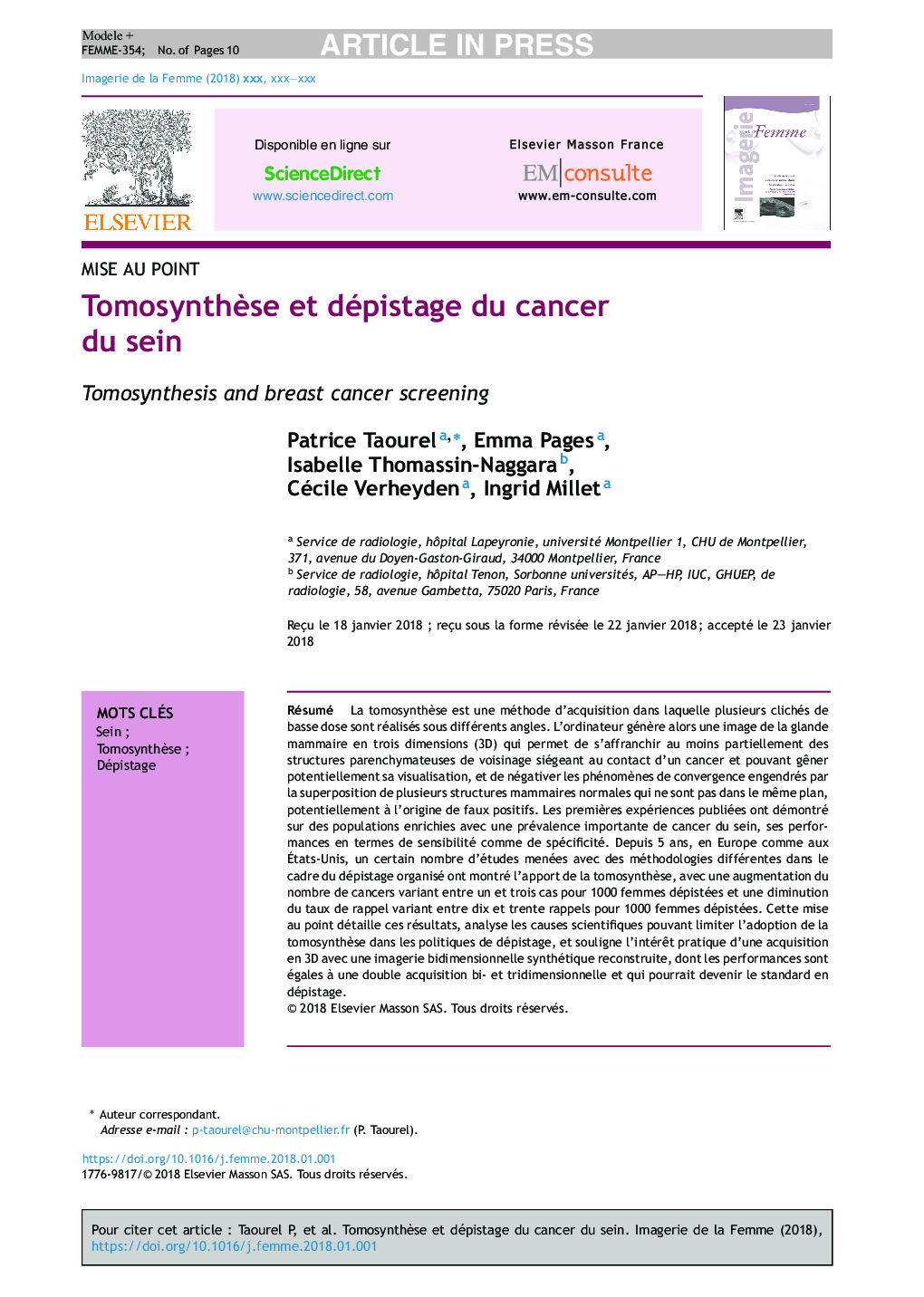| Article ID | Journal | Published Year | Pages | File Type |
|---|---|---|---|---|
| 8606677 | Imagerie de la Femme | 2018 | 10 Pages |
Abstract
Digital breast tomosynthesis is an imaging method for which multiple projection views are acquired and reconstructed to provide three dimensions (3D) mammography. It may allow to diagnose a lesion masked by breast density or overcome fibroglandular tissue superposition misinterpreted as a lesion when none is present. First studies published in diagnostic population with a high prevalence of breast cancer have shown the accuracy of tomosynthesis including an increase of both sensitivity and specificity. For the last 5Â years, in Europe as well as in the United States with different design, some studies performed in screening populations have shown the value of tomosynthesis in screening. There was an increase of the rate of detected cancers reaching one to three cancers for 1000 screened women and a decrease of the recall rate varying between ten and 30 recalls for 1000 screened women. This topical review describes these results, analyses the scientific causes that could limit the use of tomosynthesis in screening policy and underlines the practical interest of a 3D acquisition with synthesized two dimensions (2D) digital mammograph which allows the same accuracies than 2D plus 3D acquisitions and which could become the reference standard.
Related Topics
Health Sciences
Medicine and Dentistry
Health Informatics
Authors
Patrice Taourel, Emma Pages, Isabelle Thomassin-Naggara, Cécile Verheyden, Ingrid Millet,
